
by Dr. Katherine | Nov 17, 2022 | biohacks, Chiropractic, gratitude, Health, wellness
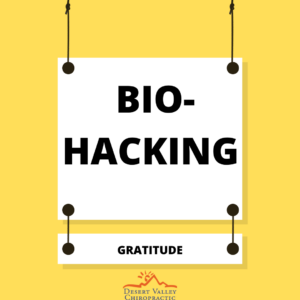 We work a lot on your physical health here at Desert Valley Chiropractic with chiropractic adjustments for your joints to improve their function and reduce the inflammation and toxins surrounding them. What if an improvement in our outlook, the way we see our lives and ourselves, our overall attitude and perspective on life could also improve our physical health? Read on……..
We work a lot on your physical health here at Desert Valley Chiropractic with chiropractic adjustments for your joints to improve their function and reduce the inflammation and toxins surrounding them. What if an improvement in our outlook, the way we see our lives and ourselves, our overall attitude and perspective on life could also improve our physical health? Read on……..
A daily practice of gratitude can increase your happiness and improve your health. Learning to biohack your neurotransmitters and emotional wellbeing is yet another way to improve your overall health, wellness and possibly your longevity. Making this months timely biohack, gratitude! Expressing gratitude is associated with a host of mental and physical benefits. Studies have shown that feeling thankful can improve sleep, mood, and immunity. Gratitude can also decrease depression, anxiety, difficulties with chronic pain and risk of disease. Beginning a practice of gratitude along with your chiropractic care may just help those results come along faster! Choosing to change where you focus your mind can have a big impact even when you cannot change your circumstances. Gratitude effects hormones and neurotransmitters like cortisol, oxytocin, dopamine and serotonin. This has positive effects on your physical and mental health.
 Choosing to count your blessings and making the time to be grateful for the good things in your life can have a far reaching positive effect. Gratitude is being aware of and thankful for the good things you have relationships, current situations, the ability to work on your health and many other circumstances can all be an opportunity to reflect on gratitude. Remember things to not have to be prefect or even great to be grateful. Being thankful for where you are and what you have can have many positive health effects. Studies show practicing gratitude can lead to more intimate and connected relationships, less depression, more motivation and engagement, and better overall mental well-being.
Choosing to count your blessings and making the time to be grateful for the good things in your life can have a far reaching positive effect. Gratitude is being aware of and thankful for the good things you have relationships, current situations, the ability to work on your health and many other circumstances can all be an opportunity to reflect on gratitude. Remember things to not have to be prefect or even great to be grateful. Being thankful for where you are and what you have can have many positive health effects. Studies show practicing gratitude can lead to more intimate and connected relationships, less depression, more motivation and engagement, and better overall mental well-being.
Gratitude increases happiness, gratitude helps people to feel happier and experience positive emotions. In short, gratitude can boost the neurotransmitter serotonin and activate the brain stem to produce dopamine.” Dopamine is our brain’s pleasure chemical. The more we think positive, grateful thoughts, the healthier and happier we feel. When you focus on things that make you feel grateful you will find that positivity follows.
 Gratitude is good for your emotional wellbeing. It can give you emotional health and resilience when you’re confronted with stress, loss, grief, or trauma. Gratitude lowers the stress hormone cortisol which helps you to better manage your response to stress. In a study on gratitude and appreciation, participants who felt grateful showed a reduction in the level of cortisol, the stress hormone. They had stronger cardiac functioning and were more resilient to emotional setbacks and negative experiences.
Gratitude is good for your emotional wellbeing. It can give you emotional health and resilience when you’re confronted with stress, loss, grief, or trauma. Gratitude lowers the stress hormone cortisol which helps you to better manage your response to stress. In a study on gratitude and appreciation, participants who felt grateful showed a reduction in the level of cortisol, the stress hormone. They had stronger cardiac functioning and were more resilient to emotional setbacks and negative experiences.
Gratitude improves physical health, people who are grateful tend to sleep better and have fewer aches and pains. Increased feelings of gratitude may help to improve immune function and reduce inflammation. Researchers have shown that when we practice appreciation, our bodies release t oxytocin hormone, which expands blood vessels, reduces blood pressure, and protects your heart. Oxytocin deepens our relationships and helps us feel more connected to others
Improved relationships, people who are focused on gratitude are often inspired to give back and support their communities. This tends to build relationships and community. A report in the Harvard Mental Health Letter states: ‘A study of couples found that individuals who took time to express gratitude for their partner not only felt more positive toward the other person but also felt more comfortable expressing concerns about their relationship.’
Research also shows that generosity and gratitude work hand in hand with benefits for the giver and one receiving! It seems that expressing gratitude is linked to the release of oxytocin, sometimes called the ‘love hormone’, which is perhaps why a study has shown that participants giving and receiving thanks felt more loving and caring towards their partner.
How to implement the practice of gratitude
 Gratitude can be felt and acknowledged in several ways, you can be grateful for the past, past memories and experiences. You can express gratitude for your current circumstances and the positive aspects of your life, you can look toward the future with optimism and the expectation of positive things to come!
Gratitude can be felt and acknowledged in several ways, you can be grateful for the past, past memories and experiences. You can express gratitude for your current circumstances and the positive aspects of your life, you can look toward the future with optimism and the expectation of positive things to come!
Mindfulness and gratitude are connected. Mindfulness is the practice of intentionally focusing your attention on something. Even just a few minutes of meditation or prayer focusing on thankfulness can increase your feelings of gratitude.
Say thank you. The simple act of saying a sincere “thank you” to others will grow your gratitude. Both saying “thank you” out loud and taking the time to write a thank you note will help you increase gratitude in your life. If you cannot thank someone personally, even pausing to thank them in your mind can foster gratitude. As you are working on your health with adjustments and exercise thank your body for the improvements you are seeing and the things you are able to do.
Start saying grace. Pausing to express your thanks before eating is a popular practice for cultivating gratitude. Grace is commonly said as a prayer of thanksgiving before a meal, but you don’t need to be religious to say grace. Just take a moment to express your thanks for your food and recognize the blessing of a nourishing meal. If you are eating local organic food take a moment to thank your local farmers and markets for providing nutritious and healthy food for your family.
Surround yourself with gratitude cues. Fostering gratitude might require some reminders. Surround yourself with pictures of people, pets, or places that inspire your feelings of gratitude. Make a gratitude board on Pinterest and look at it each day. Leave yourself post-it notes with reminders of what you are thankful for and make it a habit to take a moment to give thanks whenever you see them.
When you make an effort to focus your mind and thoughts on things you are grateful for, you’ll start to notice more things to be grateful for. Brain scans of people who foster gratitude have shown changes to the prefrontal cortex that make them more likely to experience gratitude in the future. This means that as you work to have more gratitude in your life, the positive feelings of thankfulness will begin to flow more easily and naturally.
Fostering gratitude takes a little bit of time and intention, but your efforts will pay off. You will transform your mind and possibly even improve your physical and mental health by choosing to focus on gratitude.
 On the topic of gratitude I want to take this as an opportunity to sincerely thank each and every one of our patients over the years. This December marks our 13th year here at Desert Valley Chiropractic and we would not be here without our amazing supportive patients and our outstanding staff. You have blessed us by choosing us as your chiropractors, the referrals you send, your support, your reviews, your attendance at our events and continuing to choose us as your doctors allows us to do what we love. Our practice has grown and flourished over the years, we have won three Best Of the Valley Awards, successfully treated thousands of patients and met many wonderful friends all because of the people who show up and support us. One of the things we realized recently is our practice is at a stage where we are beginning to see patients we treated as children bringing their own children in to see us! As providers this is an amazing and heartwarming compliment. Your support provides for our family, allows us to care for our awesome employees and give back to our community we are truly grateful for all of that and more!
On the topic of gratitude I want to take this as an opportunity to sincerely thank each and every one of our patients over the years. This December marks our 13th year here at Desert Valley Chiropractic and we would not be here without our amazing supportive patients and our outstanding staff. You have blessed us by choosing us as your chiropractors, the referrals you send, your support, your reviews, your attendance at our events and continuing to choose us as your doctors allows us to do what we love. Our practice has grown and flourished over the years, we have won three Best Of the Valley Awards, successfully treated thousands of patients and met many wonderful friends all because of the people who show up and support us. One of the things we realized recently is our practice is at a stage where we are beginning to see patients we treated as children bringing their own children in to see us! As providers this is an amazing and heartwarming compliment. Your support provides for our family, allows us to care for our awesome employees and give back to our community we are truly grateful for all of that and more!
We are truly blessed and grateful to have all of you behind us supporting our practice.
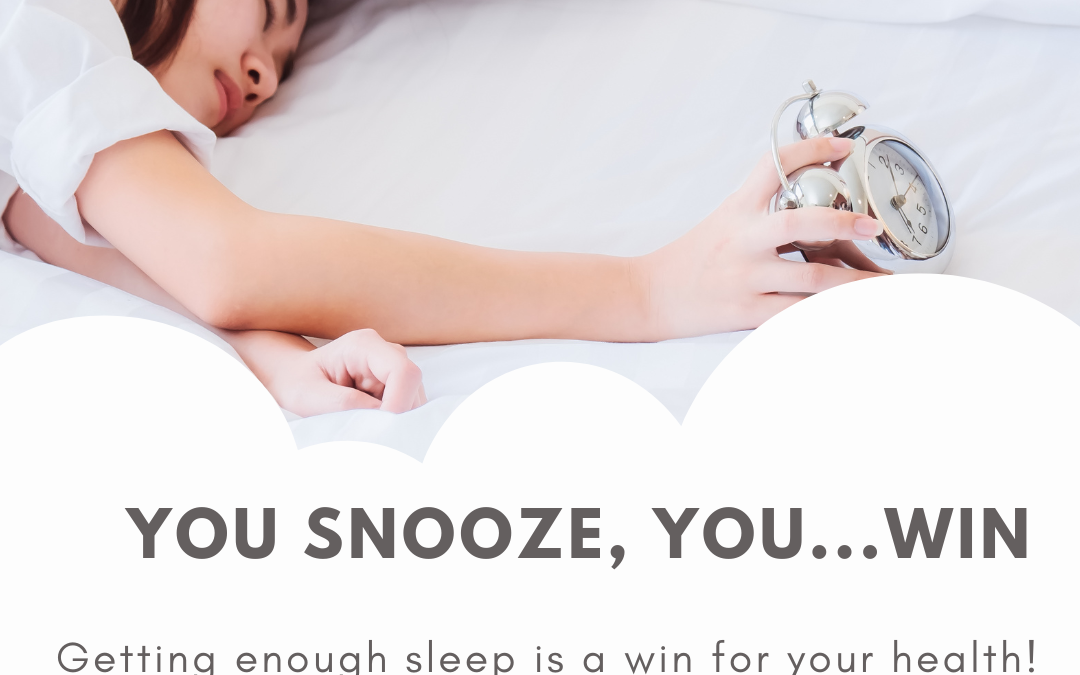
by Dr. Katherine | Oct 27, 2022 | biohacks, Chiropractic, Health, Sleep, Uncategorized, wellness
Why getting your beauty sleep is important for your health…….
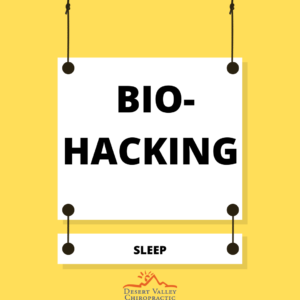
Not being able to get a good nights sleep is a very frustrating and increasingly common problem in our society. It is a common complaint we hear at Desert Valley Chiropractic ,read on to see how chiropractic can help! Not being able to fall asleep or stay asleep during the night is a terrible feeling and it has a negative impact on your health. Quality sleep is an essential part of your overall wellbeing, both physically and mentally. Ongoing sleep deprivation can lead to issues such as heart disease, kidney disease, high blood sugar, anxiety, diabetes, and stroke. Not everyone realizes the importance of quality sleep, but it’s just as crucial as exercise and healthy eating. So that is why this months bio-hack is improving your sleep!
Getting to sleep in our society is becoming more and more of a science! For our ancestors, it was a little simpler, when the sun went down you slept. Our body was designed to flow with our circadian rhythm but with introduction of modern lighting fixtures, electronic devices, and just the general fast-paced lifestyle that we all live, sleep doesn’t come as naturally as it should. If you have trouble sleeping, take a look at our best tips for how to fall asleep quickly!
Sleep with Your Phone in Another Room. It has become common to keep our phones right beside us while we sleep. We use it as our alarm and many of us check our emails and social media as soon as we wake up. The more you’re on your screen the more your brain is stimulated and the harder it is for you to fall asleep. These devices emit light of a blue wavelength, which may trick your brain into thinking it’s daytime. Too much light from your screen can affect melatonin production, signaling to your body that you’re not ready for sleep. Get a separate alarm clock and sleep with your phone in another room so you’re not tempted to look at it before bed and if you wake up during the night!
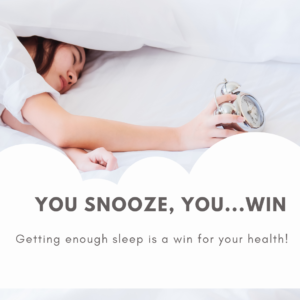
Try using blue light glasses. Blue light filtering glasses are a way to protect yourself from digital eye strain and sleep disruption. Blue light glasses work by protecting your eyes from high-energy blue wavelengths, reducing the potential for eye damage from prolonged exposure. Generally, the purpose of blue light glasses is to reduce digital eye strain and improve sleep quality.
Sleep in a Cool Room. Your bodies core temperature needs to drop to initiate sleep. When you’re falling asleep your internal body temperature drops slightly and reaches its lowest point between 2 and 4 am. A bedroom temperature of 65 to 72 degrees is in a ideal range for sleep.
Breathe in Lavender. A great way to fall asleep is to diffuse lavender before bed or use a lavender lotion, even scent your linen with lavender if you really enjoy the scent. Lavender helps you relax, can lower your blood pressure, and helps clear your mind. Breathe in the scent of lavender before bed to help you sleep deeper and wake up more invigorated!
Stick to a Regular Sleep Schedule. A regular sleep schedule is key to beating insomnia. Plan for sleep, sleep isn’t always as easy as just having the time to lay down, but scheduling your rest periods will be a big step in the right direction. Get into a routine and plan to make sure you have enough time set aside for rest by counting backwards from when you need to wake up each morning. If you tend to always go to bed at different times, this can really mess up your sleep cycle. It’s best for your biological clock if you go to bed and wake up at the same time each day, including weekends. Some people like to sleep in later on the weekends but doing that can make your insomnia worse.
Use Your Bedroom Only for Sleeping. It’s important for your mind and body to associate your bedroom with sleep. If you work from home or bring work home, don’t do it in your bedroom. If you do, your mind will associate it with work and keep your wheels turning. It’s also best not to watch TV or do anything that stimulates your mind – keep your bedroom for sleeping!
Keep Clocks Out of View. One of the worst things you can do is watch the minutes go by when you’re trying to get to sleep. The more you think about how much later it’s getting, the more anxious you’ll become about not falling asleep. This also goes for waking up in the middle of the night. If you’re watching 3 o’clock turn to 4 o’clock and 4 o’clock turn to 5 o’clock, you’re going to feel even more stressed out.
Stay Out of Your Head. This one’s easier said than done but do your best not to think about everything under the sun when you go to bed. And most importantly, try not to think about the fact that you can’t fall asleep. Work on relaxation techniques such as deep breathing and yoga to get you into a relaxed state instead.
Read a Book. Reading a book before you go to bed can help take your mind off daily stressors and will help you relax. Try to go to bed half an hour earlier than you usually do to get some reading in. If you wake up in the middle of the night and are awake for more than 20 minutes, use a dim light and read a book to help you get back to sleep.
Practice Meditation Before Bed. Meditation can bring your mind and body to total relaxation before bed, and help you get to sleep faster. Meditation helps enhance melatonin levels and helps the brain to achieve a sleepy state. It will be easier to fall asleep and you’ll wake up feeling more energized.
Avoid Long Daytime Naps. If you’re not getting a good night’s sleep it’s typical to feel tired during the day, but try to skip naps if you can. Long naps (over 20-30
Write Down a To-Do List Before Bed. Many people can’t get to sleep because they’re worried about what they have to do the next day. Instead of letting your to-do list float around in your mind and keep you up, write it down on a piece of paper.
Exercise During the Day. Exercise is a great way to make yourself feel tired and help you get to sleep quickly. Exercise boosts your serotonin levels and decreases cortisol (the stress hormone) to help you get a better quality sleep. Moderate-intensity exercise seems to work best, whereas extreme and excessive exercise may lead to a poorer sleep.
Don’t Drink Caffeine in the Afternoon. Drinking caffeine after 2 pm can seriously mess up your sleep cycle. Although everyone reacts differently to the effects of caffeine, it’s generally best not to drink it at least 6 hours before you sleep, and even more if you have insomnia. Try to limit coffee consumption to the morning if you can, or cut it out completely.
Create a Bedtime Routine. Having the same routine every night before you go to sleep can help calm your mind, relax your body, and condition yourself to realize it’s time to go to sleep. This routine can be 15 minutes to an hour, whatever works best for you, but be consistent with it every night. Find a routine that works for you whether that includes taking a warm bath, stretching, writing in a gratitude journal, reading, writing down your to-do list or goals, or anything else that feels good.
Stretch Before Bed, muscle tension can lead to restless nights. Do a short yoga routine or stretch out your tightest muscles before bed. Hamstrings, lower back, shoulders and ankles are some of the common areas that will be tight after a long day. Picture turning off every muscle in your body. Start at the toes and end with the brain, relaxing each muscle as you go.
Get adjusted
Many don’t realize that chiropractic can help with sleep issues! According to the National Sleep Foundation, nearly one-third of people who have undergone a chiropractic adjustment say they experience an immediate improvement in sleep.
The benefits of regular chiropractic care for patients with sleep issues include:
- Easing muscle tension that causes restlessness,
- Relaxing the body,
- Relieving pain and discomfort,
- Stimulating circulation and blood flow, and
- Improving central nervous system function.
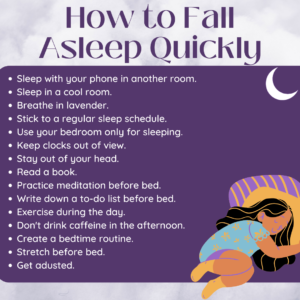
Your body needs sleep to repair and regenerate muscle tissues, skin cells and bone. A study that examined the impacts of sleep on injuries found sleep deprivation caused a marked difference in molecular markers of muscle repair. This showed that sleep impacted the body’s regeneration functions and can support healing. So while you are healing being able to get some sleep is very important.
Personally sleep does not always come easy for me, I am a mom, a doctor, a wife, a business owner and an employer and probably a few other things I am forgetting at the moment! I am also an expert worrier and I have trouble shutting my brain down sometimes! My personal favorites which make up my night time routine are: Getting adjusted, I always know I need an adjustment when my sleep patterns get bad. I exercise daily, I avoid caffeine as much as possible and definitely past about 2pm, I read at night and do some breathing exercises. I use the to do list tip and get things out of my head before I go to bed. I take magnesium and formula 303 before bed almost every night. I hope you have found these tips helpful, I encourage you to try a few of them out or include some new ones into your night time routine!
We carry a couple of products in the clinic which our patients have had great results with:
FORMULA 303 ALL-NATURAL RELAXANT
A Gluten-Free, Non-GMO product

Formula 303 is an all natural herbal remedy that harnesses the medicinal properties of valerian root, passion flower, and magnesium to provide you with relaxed muscles, stress relief, and natural relief from just some of the following:
- Muscle Pain
- Muscle Spasms
- Joint Pain Relief
- Backache
- Leg Cramps
- Pulled Muscle
- Neck and Shoulder Pain
- Tension and Stress
- PMS Cramps
- Restless Sleep
Other valerian root herbal supplements only contain one or two of these important ingredients, Formula 303’s unique blend allows for the maximum levels to provide you with a safe, non-habit forming natural muscle relaxant that is perfect for long term use.
Valerian Root
Used for Centuries to calm upset nerves and for treating mood problems, pain, and headaches. Today, it is still used for its antispasmodic, calmative, tranquilizing, carminative, and pain relief effects.
Passion Flower
Discovered in 1569, passion flower has been used primarily as a sedative used to quell nervousness and anxiety, promote better sleep, reduce swelling as an anti-inflammatory, and as an antispasmodic and anti-convulsant used in the treatment of muscle cramps, dysmenorrhea, and other conditions.
Magnesium Carbonate
Magnesium is one of the most essential minerals in the development and function of nerves. It plays a large role in the overall stabilization of nerve cells, which without nerve cells would be in the state of tetany.
Be Sleepy CBD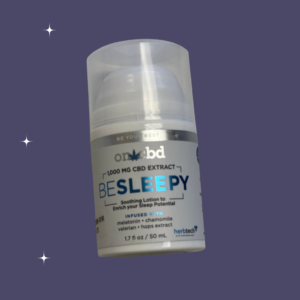
DESCRIPTION
ON CBD: Be Sleepy is a soothing lotion to enrich your sleep potential. On CBD Be Sleepy is infused with Melatonin, Chamomile, Valerian and Hops Extract.
- 1,000 mgs Hemp CBD Extract
- Dosed Controlled 20 mgs CBD Extract Per Pump
- 50 Pumps Per Bottle
- Guaranteed To Contain Between 80%-95% Pure CBD
- Formulated with Proprietary Phase Change Delivery Emulsion
ON CBD: Be Sleepy is a soothing hydrating body lotion On CBD Be Sleepy is infused with Melatonin, Chamomile, Valerian and Hops Extract.
- 1,000 mgs Organic Industrial Hemp CBD Extract
- Dosed Controlled 20 mgs CBD Extract Per Pump
- 50 Pumps Per Bottle
- Guaranteed To Contain Between 80%-95% Pure CBD
- Formulated with Proprietary Phase Change Technology
Magnesium

Magnesium helps the body relax. This nutrient reduces stress and helps you sleep longer.
Magnesium is a nutrient that’s involved in several important bodily functions. It Plays a role in muscle and nerve function, is involved in regulating blood pressure and blood sugar, and even helps build bones and DNA.
Some studies have found that Magnesium supplements can:
Make it easier to fall asleep
Improve sleep quality
Reduce symptoms of restless leg syndrome which can interfere with a good night’s sleep

by Dr. Katherine | Aug 26, 2022 | biohacks, Chiropractic, Exercise, Health, Uncategorized, wellness
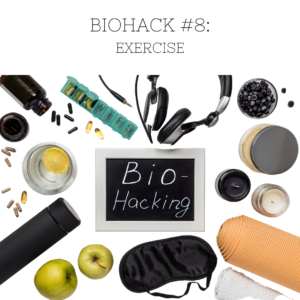 One of my favoritee things about being a chiropractor at Desert Valley Chiropractic is restoring patients ability to do the things they love and returning them to active lifestyles. In fact, it may be my most favorite thing! Seeing our patients regain their ability to hike, bike, walk, practice yoga, garden and enjoy time with their family and friends is incredibly rewarding. The amazing bonus is we get to do it using gentle effective activator adjustments and NO drugs! Your ability to move and exercise is so strongly linked to both your quality and quantity of life that it is not an over statement to say getting active can literally save or change your life. So this month we are going to discuss exercise and why just 30 minutes of activity might be the ultimate life changing biohack!
One of my favoritee things about being a chiropractor at Desert Valley Chiropractic is restoring patients ability to do the things they love and returning them to active lifestyles. In fact, it may be my most favorite thing! Seeing our patients regain their ability to hike, bike, walk, practice yoga, garden and enjoy time with their family and friends is incredibly rewarding. The amazing bonus is we get to do it using gentle effective activator adjustments and NO drugs! Your ability to move and exercise is so strongly linked to both your quality and quantity of life that it is not an over statement to say getting active can literally save or change your life. So this month we are going to discuss exercise and why just 30 minutes of activity might be the ultimate life changing biohack!
Numerous health care professionals have stated that if you could bottle the benefits of exercise you would have a miracle drug or supplement at your disposal! The benefits of getting just 30 minutes of exercise a day include:
Sign me up! Where do I start?

So where do you start if you or a loved one are struggling to be active or can’t do 30 minutes of exercise? I would recommend starting where you are, if you can do five minutes do five minutes. You don’t have to do an hour of Cross Fit to reap the rewards of exercise (if you are doing an hour of Cross Fit AWESOME keep going!). Start with walking or swimming both are excellent low impact exercises. Revisit each one of the topics in this blog series. The topics we have discussed so far have all been chosen to help with healing, vitality and energy. Get your vitamin D tested, practice breathing exercises, work on your posture, do vagus nerve exercises, clean up your diet and at the top of the list GET ADJUSTED chiropractic keeps you moving!
Exercise Facts
Exercise is defined as any movement that makes your muscles work and requires your body to burn calories. There are many types of physical activity, including swimming, running, jogging, walking, biking, sports and dancing, to name a few. Being active has been shown to have many health benefits, both physically and mentally. It may even help you live longer
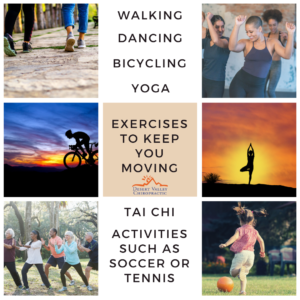
Exercise and physical activity are good for just about everyone, including older adults. No matter your health and physical abilities, you can gain a lot by staying active. In fact, studies show that “taking it easy” is risky. Often, inactivity is more to blame than age when older people lose the ability to do things on their own. Lack of physical activity also can lead to more visits to the doctor, more hospitalizations, more use of medication and more illnesses.
Approximately 85 percent of people in North America live largely sedentary lifestyles this includes our children. The human body was designed to move, and when it’s deprived of this movement, the results can manifest as poor physical health, mood disorders, and accelerated aging. In fact, studies show that inactivity might be as bad for our health as smoking, leading to increased risks of chronic health problems such as heart disease, Type 2 diabetes, and some forms of cancer. Your physical and mental health depend so much on exercise that not getting enough is considered one of the 10 major risk factors for death worldwide.
Regular exercise is a highly effective way to relieve stress, anxiety, and depression, which affect millions of people throughout the United States. In addition to lowering your risks for chronic diseases, making your body move boosts your energy and improves your overall fitness. Likewise, more energy and a leaner, healthier body can boost your self-confidence.
Lack of physical activity can also strongly influence the rate at which your body ages. Inactivity accelerates the loss of muscle tissue, a process also known as atrophy, leading to weakness, increased risk of injury, and reduced coordination. This contributes to increased fall risks and decreases the ability to live independently . Inactivity also ages your brain by contributing to memory loss and brain fog.
Fortunately, experts agree you can combat these risks with just 30 minutes of moderate to vigorous exercise every day.
The specific benefits of daily 30-minute workouts, such as reduced risk of disease, improved blood pressure and increased bone density, can be measured using diagnostic testing .However, many positive changes will stand out to you and your loved ones, including increased energy, a firmer body, and a stronger immune system.
Exercise boosts circulation, muscle strength, and endorphin production, helping your body work more efficiently. Simple tasks such as walking up the stairs and washing your car will feel easier almost immediately. You’ll also be more focused at work, less fatigued, less reliant on caffeine, and more capable of accomplishing tasks throughout each day.
Gradually, regular exercise increases your muscle mass and helps you shed excess fat and fluids. As moderate daily exercise supports your body’s production of antibodies and white blood cells, it will also fight off viruses and other pathogens more efficiently, significantly boosting your immune response and ability to fight disease.
Here are some exercise ideas to help get you moving:
- W
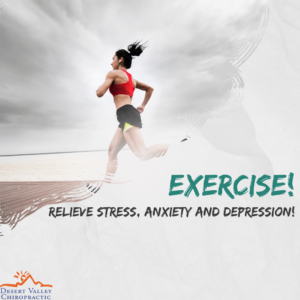 alking, bicycling, or dancing. Endurance activities increase your breathing, get your heart pumping, and boost chemicals in your body that may improve mood.
alking, bicycling, or dancing. Endurance activities increase your breathing, get your heart pumping, and boost chemicals in your body that may improve mood.
- Yoga. This mind and body practice typically combines physical postures, breathing exercises, and relaxation.
- Tai Chi. This “moving meditation” involves shifting the body slowly, gently, and precisely, while breathing deeply.
- Activities you enjoy. Whether it’s gardening, playing tennis, kicking around a soccer ball with your grandchildren, or something else, choose an activity you want to do, not one you have to do.
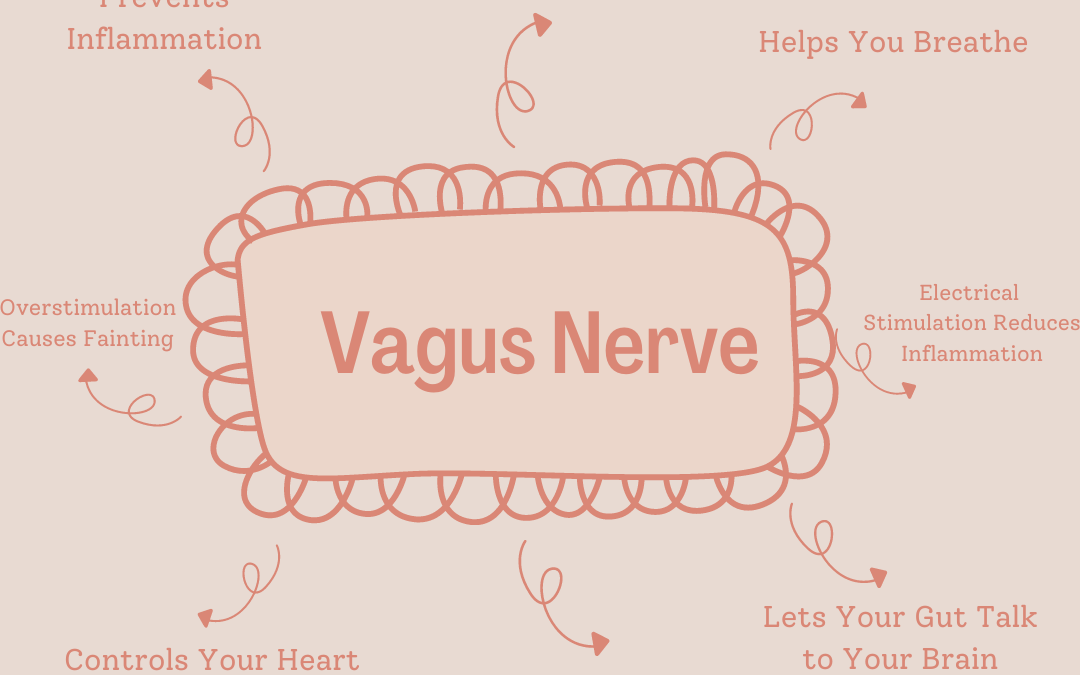
by Dr. Katherine | Aug 4, 2022 | biohacks, Chiropractic, Health, Uncategorized, wellness

This month’s biohack is the Vagus nerve. The vagus nerve gets its name because it “wanders” like a vagabond around your whole body, sending out sensory fibers from your brainstem to your visceral organs. Chiropractors and chiropractic care has long understood the incredible benefits of this remarkable nerve that effects EVERYTHING! This month I want to give our patients at Desert Valley Chiropractic a basic understanding of how this nerve works as your human reset button, how your chiropractic adjustments help to stimulate this amazing process and how you can use as few simple exercises to stimulate your vagus nerve and tap into this amazing internal system.
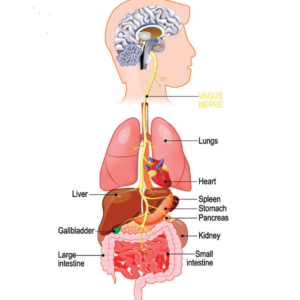
Fight or Flight, what is it and how does it effect our body? When we experience sudden, high stress, we activate our fight or flight response, getting the body ready to either flee the scene or fight. In most of our everyday experience, there is no place to run or hide, and the stressful situation is not one that can easily be fought off. Most of us are not meeting lions and tigers in the street! Most modern stressors are “man made” for example traffic, deadlines, and verbal confrontations, yet still produce that same primitive fight or flight response.
During periods of chronic high stress, the body stays in high gear, with stress hormones like adrenaline and cortisol surging through the body. This creates wear and tear on the body and mind, and over time can create a multitude of health problems such as chronic pain, gut inflammation, anxiety, mood swings, and more.
The good news is that our bodies contain their own reset button that can assist with decreasing our fight or flight response.
Your vagus nerve is one of the cranial nerves that connects the brain to the body. The vagus nerve is a major part of how our bodies and brain’s function; without it, our bodies wouldn’t be able to do basic tasks, and by stimulating it we can receive powerful health benefits. The vagus nerve, is the longest of the cranial nerves, and controls your inner rest and relax nerve center, the parasympathetic nervous system. The vagus nerve acts to counterbalance the fight or flight system and can trigger a relaxation response in our body.
Perhaps the greatest significance of the vagus nerve is that it is the body’s major parasympathetic nerve, supplying parasympathetic fibers to all the major organs of the head, neck, chest, and abdomen. The parasympathetic system is the rest and repose system it works opposite to the fight or flight system and allows our bodies to heal, repair and digest.
While there are actually two vagus nerves (the left and the right), doctors usually refer to them together as “the vagus nerve.” It originates in the brain stem and extends down through the neck and into the chest and abdomen. The vagus nerve helps to regulate many critical aspects of human physiology, including the heart rate, blood pressure, sweating, digestion, the gag reflex and even speaking. It carries both motor and sensory information, and it supplies innervation to the heart, major blood vessels, airways, lungs, esophagus, stomach, and intestines. The vagus nerve helps control several muscles of the throat and voice box. It plays a major role in regulating the heart rate and keeping the gastrointestinal tract in working order it also helps regulate vascular tone and control blood pressure. The vagus nerves also carry sensory information from the internal organs back to the brain.
Recent research has revealed that it may also be the missing link to treating chronic inflammation, and the beginning of an exciting new field of treatment for serious, incurable diseases. Here are eight facts about this powerful nerve bundle.
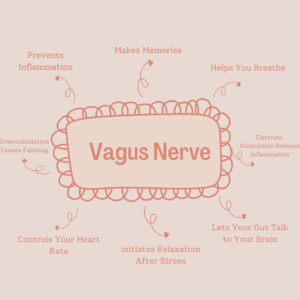
1. The vagus nerve prevents inflammation.
A certain amount of inflammation after injury or illness is normal but an overabundance is linked to many diseases and conditions, from sepsis to autoimmune conditions. The vagus nerve operates a vast network of fibers stationed like spies around all your organs. When it gets a signal for developing inflammation—the presence of cytokines or a substance called tumor necrosis factor (TNF)—it alerts the brain and draws out anti-inflammatory neurotransmitters that regulate the body’s immune response.
2. The vagus nerve helps you make memories.
A University of Virginia study in rats showed that stimulating their vagus nerves strengthened their memory. The action released the neurotransmitter norepinephrine into the amygdala, which consolidated memories. Related studies were done in humans, suggesting promising treatments for conditions like Alzheimer’s disease.
3. The vagus nerve helps you breathe.
The neurotransmitter acetylcholine, elicited by the vagus nerve, tells your lungs to breathe. It’s one of the reasons that Botox—often used cosmetically—can be potentially dangerous, because it interrupts your acetylcholine production. You can, however, also stimulate your vagus nerve by doing abdominal breathing or holding your breath for four to eight counts.
4. The vagus nerve controls your heart rate.
The vagus nerve is responsible for controlling the heart rate via electrical impulses to specialized muscle tissue—the heart’s natural pacemaker—in the right atrium, where acetylcholine release slows the pulse. By measuring the time between your individual heart beats, and then plotting this on a chart over time, doctors can determine your heart rate variability, or HRV. This data can offer clues about the resilience of your heart and vagus nerve.
5. The vagus nerve initiates relaxation after stress.
When your ever-vigilant sympathetic nervous system revs up the fight or flight responses—pouring the stress hormone cortisol and adrenaline into your body—the vagus nerve tells your body to relax by releasing acetylcholine. The vagus nerve’s tendrils extend to many organs, acting like fiber-optic cables that send instructions to release enzymes and proteins like prolactin, vasopressin, and oxytocin, which calm you down. People with a stronger vagus response may be more likely to recover more quickly after stress, injury, or illness.
6. The vagus nerve lets your gut “talk” to your brain.
Your gut uses the vagus nerve like a walkie talkie to tell your brain how you’re feeling via electric impulses called “action potentials.” Your gut feelings are very real.
7. Overstimulation of the vagus nerve is the most common cause of fainting.
If you tremble or get queasy at the sight of blood or while getting a flu shot, you’re not weak. You’re experiencing “vagal syncope.” Your body, responding to stress, overstimulates the vagus nerve, causing your blood pressure and heart rate to drop. During extreme syncope, blood flow is restricted to your brain, and you lose consciousness.
8. Electrical stimulation of the vagus nerve reduces inflammation and might stop it altogether.
Neurosurgeon Kevin Tracey was the first to show that stimulating the vagus nerve can significantly reduce inflammation. Results on rats were so successful, he reproduced the experiment in humans with stunning results. The creation of implants to stimulate the vagus nerve via electronic implants showed a drastic reduction, and even remission, in rheumatoid arthritis (which has no known cure and is often treated with toxic drugs), hemorrhagic shock, and other equally serious inflammatory syndromes.
How to stimulate the vagus nerve
Cold showers
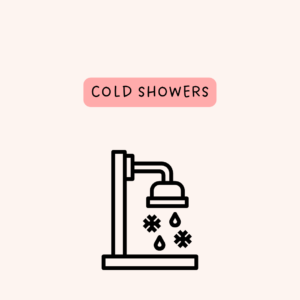
As our body adjusts to cold temperatures the vagus nerve is activated to reduce our sympathetic stress response and increase our parasympathetic rest and relaxation state. In addition to strengthening the vagus nerve it has the additional benefits of increasing lymph flow, which removes toxins, bacteria, viruses and other waste products from the body. Cold causes the heart to pump more efficiently to increase blood flow and deliver more oxygen and nutrients to the body. Cold also speeds up our metabolism, which boosts the immune system.
Humming and singing
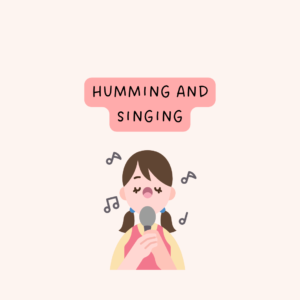
Humming, singing or chanting activates the vocal cords, which the vagus nerve passes through. The vibration of the vocal cords stimulates the nerve helping to strengthen its connection to our parasympathetic system.
Gargling
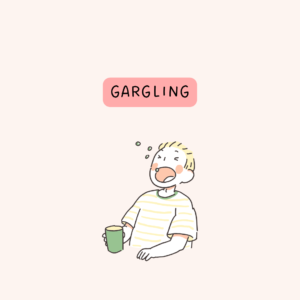
Gargling activates the muscles at the back of the throat, which the vagus nerve runs through. Stimulating and working the muscles makes the nerve fire just like when we exercise our bodies these exercises strengthen our vagal tone and improve our health.
Gag reflex
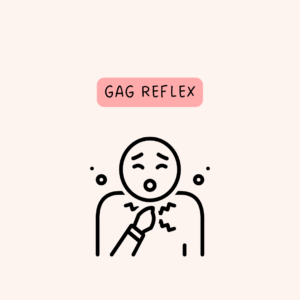
When you gag, you’re activating the throat muscles that are connected to the vagus nerve. In fact, doctors use the gag reflex as a way to tell if your vagus nerve is working optimally. If the reflex is missing or weak on either side, it could signal vagus nerve dysfunction.
Deep breathing and meditation

As we breath we stimulate the sympathetic nervous system when we inhale, while exhaling we stimulate the parasympathetic system and our relaxation response. Breathing exercises are one of the best vagus nerve exercises for digestion. Performing deep breathing exercises for 1 minute before eating activates the parasympathetic nervous system producing an increase in digestive enzymes which optimizes our digestion and the amount of nutrients, we get from the food we consume.
Exercise
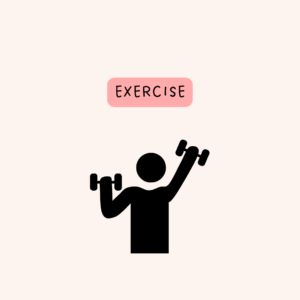
Working out and getting your body moving can affect your vagus nerve, research shows. Interval training and endurance training can increase your vagus nerve activity and improve your heart rate variability. Exercise, especially activities that get your heart rate up, offer a great way to tone your vagus nerve brisk walking, weightlifting , swimming, or cardio training are great. Cardio training is one of the best methods for vagus nerve stimulation because it requires you to work to control your breathing. However, take care not to over train. A small 2022 study found that particularly grueling workouts, like too much high-intensity interval training (HIIT), can put a lot of stress on your vagus nerve. Make it a point to incorporate breathwork and cooldowns into your workouts.
Chiropractic adjustments

Our favorite!! New research from 2018 shows that a chiropractic adjustment improves heart rate variability by boosting the health function of the vagus nerve. An improvement in the vagus nerve activity plays a major role in regulating autonomic nervous system function, lowering chronic disease risk, and decreasing mortality rates. If there is dysfunction in the joints of the spine that creates tension and inflammation at the brainstem or at various levels of the spinal cord, our nervous system, including the vagus nerve, can be impaired. Getting chiropractic adjustments will relieve the tension and reduce the inflammation around the joint and nerve setting the body up to function optimally. Those who seek chiropractic care are better equipped to deal with the common stresses that put our nervous system on edge or on overdrive.
A great morning routine to put some of these exercises into your day is do a 20- 30-minute workout focusing on your breathing and ending with 1-2 minutes of breathing exercises during your cool down. Hum or sing while you are in the shower and finish your shower off with a cold-water rinse. While brushing your teeth lightly stimulate your gag reflex on each side after gargle with a mouth rinse. Then come and see us for an adjustment!

by Dr. Katherine | Jun 21, 2022 | Chiropractic, Health, Uncategorized

Good food is so important to good health. Our bodies use the components of the food we eat for energy and metabolism as well as to repair and heal. This is why it is important to give the body good food to work with. Good organic food and cleaning up your diet is an excellent compliment to your chiropractic care as it helps to reduce inflammation in the body and helps you to heal more efficiently. Think of it like buying good building materials for a home project! If you use cheap fake products the project will fall apart with any wear and tear, need more repairs and not last as long, your body is the same!
As I started to work on this month’s biohack I realized my biggest struggle was going to be how much information there is out there on food and how it impacts our health and our communities as well. What and how we eat may be one of the biggest ways to address our health and longevity. Yet part of the problem is just HOW MUCH information is out there. With so many terms being common in today’s health-conscious culture, like “gluten free,” “all-natural,” “no-additives,” etc., it can be tough to determine what they all mean. In an effort to narrow down this vast topic I decided to focus on discussing organic food, some of the benefits to eating organic and the difference between the labels USDA ORGANIC and NON-GMO.
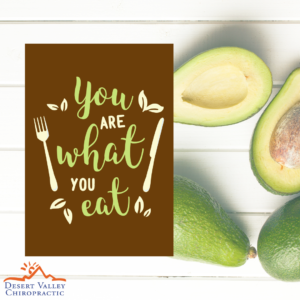
Food and what we eat is very important to many of our Desert Valley Chiropractic patients and ourselves as a family. However so is how and where we spend our money! Family farms are small business and by supporting them we are creating a demand for what is often a better quality and more humane food system. We are also keeping our dollars working to better our local economy. This is another reason we like to shop organic and local when we can. One of our favorites is the Uptown Farmers market in Central Phoenix, there are a variety of vendors there selling local organic produce. Budgeting and how we spend our money is also where the labeling system can come into play, many of us are willing to pay that little extra when it means we are feeding our families better food that leads to better health. Good food can be expensive, but the sick care side of the healthcare system is even more expensive! However sometimes we just end up over paying for a product that has used their label as a marketing tool more than a true reflection of quality ingredients.
When you’re comparing products at the grocery store, you might be wondering—what’s the difference between these two labels, and what do they mean in terms of GMO avoidance and eating organic? Here’s a general overview of the two labels and their verification processes
What Does Organic Mean?

Organic food is produced without the use of chemical pesticides or fertilizers. Pesticides include insecticides, herbicides, and fertilizers. The use of insecticides and herbicides reduce weeds and insects in crops fertilizers are used to enhance soil nutrients where they may be lacking. Organic agriculture aims to cycle resources to promote ecological balance and preserve biodiversity. Many studies show that organically gown produce contains higher nutrient profiles than conventional counterparts. This is largely due to soil conditions Prior to World War II agriculture followed the principles we now call organic. Many insecticides were neurotoxins developed from the same nerve gases used in WWII. This is why they are so toxic to handle and require special garments and equipment. These pesticides are also toxic enough that there are guidelines regarding when they can be sprayed in relation to harvest. These toxins and their residue becomes a whole health topic to its self that I encourage you to learn more about!

The National Organic Program is regulated by the United States Department of Agriculture (USDA). Their organic certification is a process-based certification that requires farmers and producers to follow approved methods in order to achieve organic certification. GMOs are prohibited from certified organic products, which means farmers are not allowed to grow produce from GMO seeds, their animals can’t eat GMO feed, and organic food producers can’t use GMO ingredients. There are differing degrees of organic certification. Some foods may be 100% organic, while other foods may just be made with organic ingredients. Either way, the basic definition of organic means there has been no chemical or artificial ingredients used in the production of the food, including pesticides, antibiotics, growth hormones, or fertilizers. Organic is also usually non-GMO as well, although there some loopholes that can compromise a food’s non-GMO status. Generally, when you purchase food with a USDA Certified Organic label , it means that food is 95-100% organic, with ingredients free of well-known contaminants and hormones. It also means that in order for a company to use that USDA certified organic label, they must undergo annual third party inspections and reviews, along with residue testing if inspectors feel the situation warrants it. That’s not to say that there aren’t some problems with organic labeling. Some foods labeled organic still contain hidden additives that aren’t organic material. Always do your homework when you can before making decisions that could affect your health.
What Does Non GMO Mean?
 GMO refers to an organism or food product that has been genetically modified. In other words, it did not develop naturally. When a food claims non-GMO status, they are basically saying they didn’t use ingredients that were genetically modified and it doesn’t come from livestock that have been fed genetically modified foods. The Non-GMO Project is a non-profit organization that independently offers GMO test verification and labeling for non-GMO products. Their verification is process-based, using traceability, segregation, and testing to ensure compliance with their standards. Companies looking to receive the Non-GMO Project stamp must follow the project’s standards of best practices and have product testing conducted at various stages of production, anywhere from the field to the packaging facility.
GMO refers to an organism or food product that has been genetically modified. In other words, it did not develop naturally. When a food claims non-GMO status, they are basically saying they didn’t use ingredients that were genetically modified and it doesn’t come from livestock that have been fed genetically modified foods. The Non-GMO Project is a non-profit organization that independently offers GMO test verification and labeling for non-GMO products. Their verification is process-based, using traceability, segregation, and testing to ensure compliance with their standards. Companies looking to receive the Non-GMO Project stamp must follow the project’s standards of best practices and have product testing conducted at various stages of production, anywhere from the field to the packaging facility.
Despite their inspection process, the project can’t legally claim products to be “GMO free” because the contamination risks to seeds, crops, and ingredients are too high. However, they’re the only organization offering independent verification of testing for GMO products in the US and Canada. However, when you see products like water, which has no genetic material, is labeled “non-GMO,” that should raise a red flag so that you look a little more deeply at what you’re actually purchasing or more importantly being marketed to buy. Additionally, the Non-GMO Project Verified label doesn’t mean there are absolutely no GMOs present. It means companies have submitted to the Non-GMO Project’s standards and have undergone their testing requirements, but there are still limits to those tests. Products labeled non-GMO could still have up to 0.9 percent genetically modified material.

The biggest takeaway you need to know between organic foods and non-GMO foods is that organic foods are almost always also non-GMO. Almost always, not always. Look for labels that state 100% USDA certified organic if you want to be as sure as possible. However, the same thing cannot be said for non-GMO foods. They are definitely not always organic. Also, there are many companies who use non-GMO labels in a way that is misleading. Simply saying something is non-GMO doesn’t make it so. It doesn’t necessarily mean the company isn’t being truthful, but obtaining the necessary certifications can be cost-prohibitive, especially for smaller companies. So, sometimes companies will put something on a label that isn’t necessarily certified.
 Since you can’t be sure non-GMO foods are always organic, it’s a much safer bet to shop organic. Then you can be reasonably certain that most of your organic foods will also be free of GMOs as well. Look for the USDA Certified Organic label it is a little green-and-white label stating USDA Organic. When shopping, that’s the label you should look for. Moral of the story? Yes, organic usually means non-GMO. But be careful, because non-GMO does not always mean organic. Shop wisely.
Since you can’t be sure non-GMO foods are always organic, it’s a much safer bet to shop organic. Then you can be reasonably certain that most of your organic foods will also be free of GMOs as well. Look for the USDA Certified Organic label it is a little green-and-white label stating USDA Organic. When shopping, that’s the label you should look for. Moral of the story? Yes, organic usually means non-GMO. But be careful, because non-GMO does not always mean organic. Shop wisely.
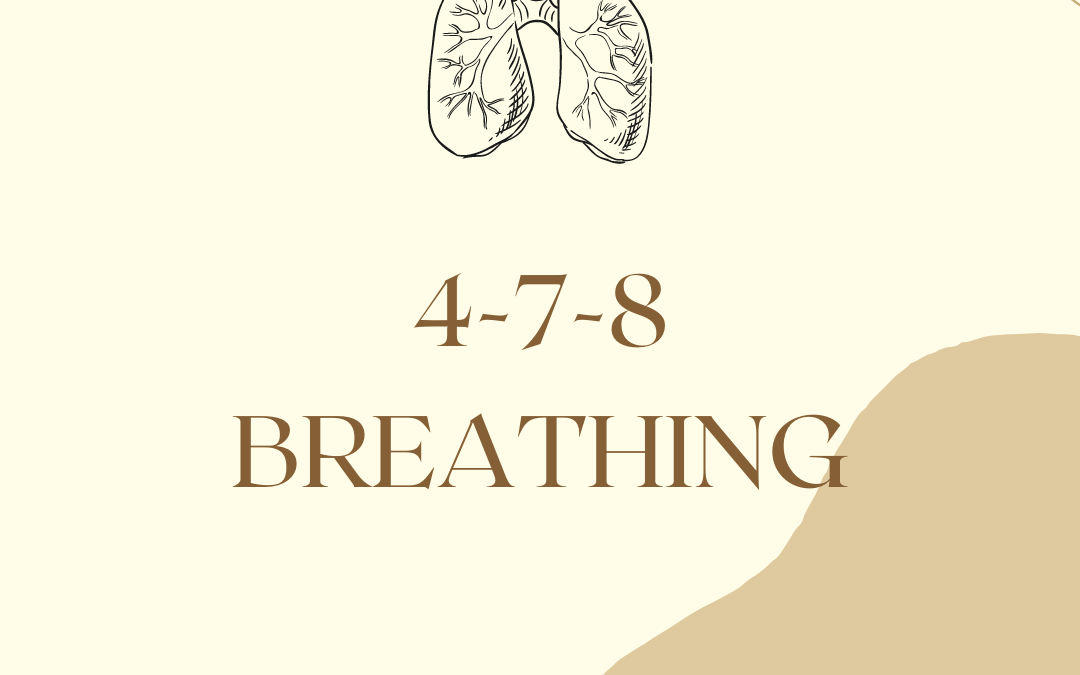
by Dr. Katherine | Apr 21, 2022 | Chiropractic, Health
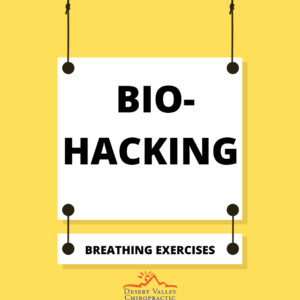
Hack Your Way to Better Health
We are on our fourth biohack of the year this month! So far we have discussed the concept of biohacking itself, the importance of knowing your vitamin D levels and maintaining them, chiropractic care and how it relates to increased health and vitality and this month we will discuss breathing exercises and learning to control our breathing for improved health. My goal as your chiropractor is to bring to our patients at Desert Valley Chiropractic and our North Phoenix community simple inexpensive ways to improve their health and feel a sense of empowerment over their healthcare journey.
Learn to Control Your Breath
Learning to control your breathing is a very important biohack that can help with everything from increased lung capacity, leading to better exercise capacity and longevity, to controlling pain and anxiety. Did you know that even your lungs need exercise to stay healthy and for your body to function normally? Your body needs oxygen for survival. Every activity in the body is dependent on oxygen, including the metabolic functioning of cells. The lungs perform the task of delivering oxygen to every part of the body. By practicing a few exercises regularly, you can train your lungs to increase their capacity, which will help you inhale more oxygen. This will, in turn, protect the body from various breathing disorders, help increase stamina, and ensure every part of the body gets adequate oxygen. Breathing is not just a necessity of life—it also has an array of positive effects on our body, mind, and spirit.

When we breathe deeply and mindfully, our breath can create profound physiological effects that we’re only beginning to appreciate with the rise of yoga, meditation, and other breathwork practices in the last few decades. Chiropractic care compliments yoga and mediation practices as we also focus on alignment and balance. Your chiropractic adjustments assist in healthy breathing by reducing tension and inflammation allowing the vertebra in your mid back to align, your ribs and the muscles in your neck to all work together to assist in better breathing.
So, scroll down and check out these super-efficient exercises to increase your lung capacity.
Breathing Exercises
These exercises are not meant to diagnosis or treat any other condition If you are not feeling well please seek medical attention. Also if you have an existing lung condition get clearance from your lung doctor (pulmonologist) before you begin these.
Better Breathing Tip: It’s normal to hold your shoulders tense and high. Before starting any breathing technique, take a minute to drop your shoulders down, close your eyes, inhale, exhale and relax.
Number One is Belly Breathing
Inhale through the nose push your belly out.
This is the exact opposite movement of sucking it in! Now breath out through the mouth and pull your stomach in while pushing your breath out.
To do belly breathing:
- Place one hand on your abdomen. Place one hand on your upper chest.
- Focus your breathing on your abdomen.
- As you breathe in, the hand on your abdomen should rise.
- As you breathe out, the hand on your abdomen should lower.
- Breathe in through the nose. Breathe out slowly through pursed lips.
- Start by doing it while lying on your back. Then try it while sitting. Then try it while standing. Finally, try it while doing an activity.
Learning to belly breath is the foundation for good breathing practice.

Number Two is Pursed Lips Breathing
Pursed lip breathing helps control shortness of breath , and provides a quick and easy way to slow your breathing. This helps to manage stress, anxiety and pain. During a panic attack, taking rapid breaths can lead to a faster heart rate, dizziness, muscle tension, and other symptoms. These symptoms may, in turn, contribute to even more anxiety.
This should feel like smelling flowers and blowing out candles.
To do pursed lips breathing:
- Breathe in through your nose (as if you are smelling something) for about 2 seconds.
- Pucker your lips like you’re getting ready to blow out candles on a birthday cake.
- Breathe out very slowly through pursed-lips, two times longer than you breathed in.
- Work towards increasing your times
- 2 seconds in : 4 seconds out
- 4 seconds in : 8 seconds out
- 8 seconds in : 16 seconds out
Number 3 is 4-7-8 breathing
The 4-7-8 breathing technique requires a person to focus on taking a long, deep breath in and out. Rhythmic breathing is a core part of many meditation and yoga practices as it promotes relaxation.
Dr. Weil is a celebrity doctor and the founder and director of the University of Arizona Center for Integrative Medicine.
Dr. Andrew Weil teaches the 4-7-8 breathing technique, which he believes can help with the following:
- reducing anxiety
- helping a person get to sleep
- managing cravings
- controlling or reducing anger responses

To try the 4-7-8 method, begin by sitting with your back straight. Once you are familiar with these steps, the exercise can be performed while lying in bed, too. You’ll want to:
- Place the tip of your tongue against the ridge of tissue behind your upper front teeth. You’ll keep it there for the entire exercise.
- Completely exhale through your mouth, making a “whoosh” sound.
- Close your mouth and inhale quietly through your nose as you mentally count to four.
- Hold your breath for a count of seven.
- Exhale completely through your mouth, making another “whoosh” sound to a count of eight.
Number 4 is Alternate nostril breathing
Alternate nostril breathing is a simple technique originating from Ayurvedic medicine and yoga that is designed to settle the mind, body, and emotions:
- Lift your right hand up toward your nose, exhale completely and then use your right thumb to close your right nostril.
- Inhale through your left nostril and then close the left nostril with your fingers.
- Then release your thumb from the right nostril and exhale through this side.
- Next, inhale through the right nostril and then close it again with your thumb.
- Release your left nostril and exhale though it.
- Repeat for as long as required and finish with an exhalation on the left side.
Many people feel they do not need to increase their lung capacity until the time a simple and short exercise like playing with their kids or running with pets tires them and leaves them breathless.
Do these exercises to increase lung capacity and enjoy leisure time with loved ones without experiencing shortness of breath and fatigue
https://www.lung.org/lung-health-diseases/wellness/breathing-exercises

 We work a lot on your physical health here at Desert Valley Chiropractic with chiropractic adjustments for your joints to improve their function and reduce the inflammation and toxins surrounding them. What if an improvement in our outlook, the way we see our lives and ourselves, our overall attitude and perspective on life could also improve our physical health? Read on……..
We work a lot on your physical health here at Desert Valley Chiropractic with chiropractic adjustments for your joints to improve their function and reduce the inflammation and toxins surrounding them. What if an improvement in our outlook, the way we see our lives and ourselves, our overall attitude and perspective on life could also improve our physical health? Read on…….. Choosing to count your blessings and making the time to be grateful for the good things in your life can have a far reaching positive effect. Gratitude is being aware of and thankful for the good things you have relationships, current situations, the ability to work on your health and many other circumstances can all be an opportunity to reflect on gratitude. Remember things to not have to be prefect or even great to be grateful. Being thankful for where you are and what you have can have many positive health effects. Studies show practicing gratitude can lead to more intimate and connected relationships, less depression, more motivation and engagement, and better overall mental well-being.
Choosing to count your blessings and making the time to be grateful for the good things in your life can have a far reaching positive effect. Gratitude is being aware of and thankful for the good things you have relationships, current situations, the ability to work on your health and many other circumstances can all be an opportunity to reflect on gratitude. Remember things to not have to be prefect or even great to be grateful. Being thankful for where you are and what you have can have many positive health effects. Studies show practicing gratitude can lead to more intimate and connected relationships, less depression, more motivation and engagement, and better overall mental well-being. Gratitude is good for your emotional wellbeing. It can give you emotional health and resilience when you’re confronted with stress, loss, grief, or trauma. Gratitude lowers the stress hormone cortisol which helps you to better manage your response to stress. In a study on gratitude and appreciation, participants who felt grateful showed a reduction in the level of cortisol, the stress hormone. They had stronger cardiac functioning and were more resilient to emotional setbacks and negative experiences.
Gratitude is good for your emotional wellbeing. It can give you emotional health and resilience when you’re confronted with stress, loss, grief, or trauma. Gratitude lowers the stress hormone cortisol which helps you to better manage your response to stress. In a study on gratitude and appreciation, participants who felt grateful showed a reduction in the level of cortisol, the stress hormone. They had stronger cardiac functioning and were more resilient to emotional setbacks and negative experiences. Gratitude can be felt and acknowledged in several ways, you can be grateful for the past, past memories and experiences. You can express gratitude for your current circumstances and the positive aspects of your life, you can look toward the future with optimism and the expectation of positive things to come!
Gratitude can be felt and acknowledged in several ways, you can be grateful for the past, past memories and experiences. You can express gratitude for your current circumstances and the positive aspects of your life, you can look toward the future with optimism and the expectation of positive things to come! On the topic of gratitude I want to take this as an opportunity to sincerely thank each and every one of our patients over the years. This December marks our 13th year here at Desert Valley Chiropractic and we would not be here without our amazing supportive patients and our outstanding staff. You have blessed us by choosing us as your chiropractors, the referrals you send, your support, your reviews, your attendance at our events and continuing to choose us as your doctors allows us to do what we love. Our practice has grown and flourished over the years, we have won three Best Of the Valley Awards, successfully treated thousands of patients and met many wonderful friends all because of the people who show up and support us. One of the things we realized recently is our practice is at a stage where we are beginning to see patients we treated as children bringing their own children in to see us! As providers this is an amazing and heartwarming compliment. Your support provides for our family, allows us to care for our awesome employees and give back to our community we are truly grateful for all of that and more!
On the topic of gratitude I want to take this as an opportunity to sincerely thank each and every one of our patients over the years. This December marks our 13th year here at Desert Valley Chiropractic and we would not be here without our amazing supportive patients and our outstanding staff. You have blessed us by choosing us as your chiropractors, the referrals you send, your support, your reviews, your attendance at our events and continuing to choose us as your doctors allows us to do what we love. Our practice has grown and flourished over the years, we have won three Best Of the Valley Awards, successfully treated thousands of patients and met many wonderful friends all because of the people who show up and support us. One of the things we realized recently is our practice is at a stage where we are beginning to see patients we treated as children bringing their own children in to see us! As providers this is an amazing and heartwarming compliment. Your support provides for our family, allows us to care for our awesome employees and give back to our community we are truly grateful for all of that and more!








 One of my favoritee things about being a chiropractor at
One of my favoritee things about being a chiropractor at 

 alking, bicycling, or dancing. Endurance activities increase your breathing, get your heart pumping, and boost chemicals in your body that may improve mood.
alking, bicycling, or dancing. Endurance activities increase your breathing, get your heart pumping, and boost chemicals in your body that may improve mood.















 GMO refers to an organism or food product that has been genetically modified. In other words, it did not develop naturally. When a food claims non-GMO status, they are basically saying they didn’t use ingredients that were genetically modified and it doesn’t come from livestock that have been fed genetically modified foods. The
GMO refers to an organism or food product that has been genetically modified. In other words, it did not develop naturally. When a food claims non-GMO status, they are basically saying they didn’t use ingredients that were genetically modified and it doesn’t come from livestock that have been fed genetically modified foods. The 
 Since you can’t be sure non-GMO foods are always organic, it’s a much safer bet to shop organic. Then you can be reasonably certain that most of your organic foods will also be free of GMOs as well. Look for the USDA Certified Organic label it is a little green-and-white label stating USDA Organic. When shopping, that’s the label you should look for. Moral of the story? Yes, organic usually means non-GMO. But be careful, because non-GMO does not always mean organic. Shop wisely.
Since you can’t be sure non-GMO foods are always organic, it’s a much safer bet to shop organic. Then you can be reasonably certain that most of your organic foods will also be free of GMOs as well. Look for the USDA Certified Organic label it is a little green-and-white label stating USDA Organic. When shopping, that’s the label you should look for. Moral of the story? Yes, organic usually means non-GMO. But be careful, because non-GMO does not always mean organic. Shop wisely.



